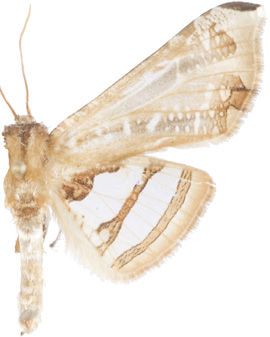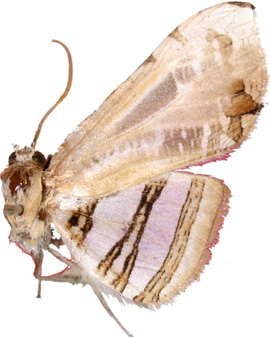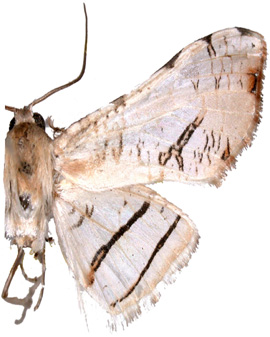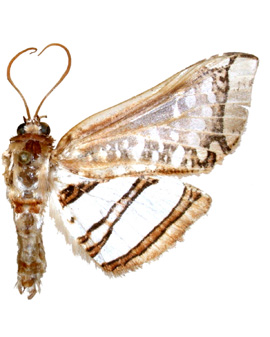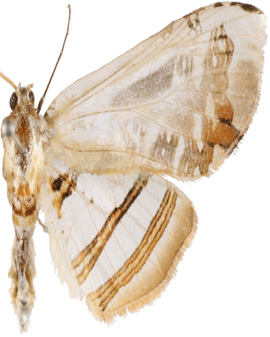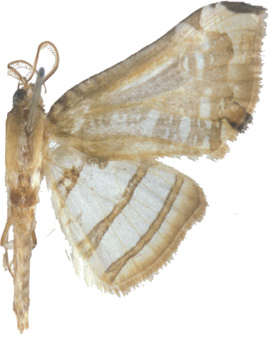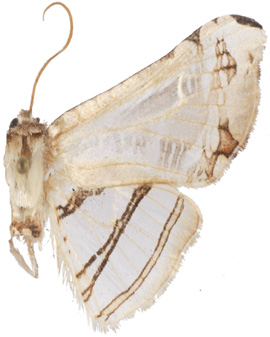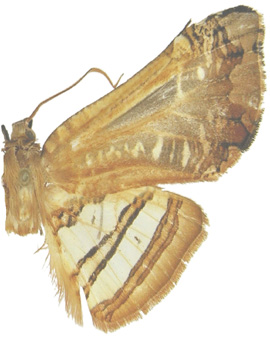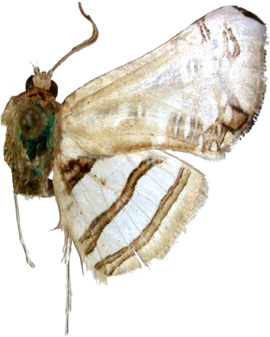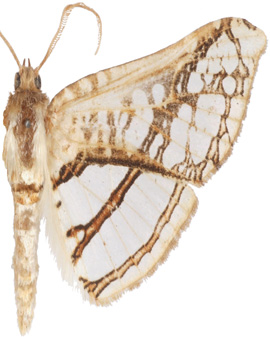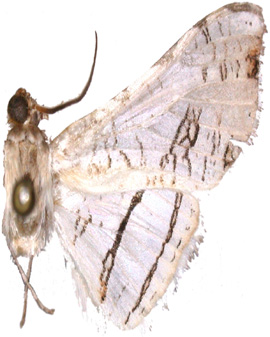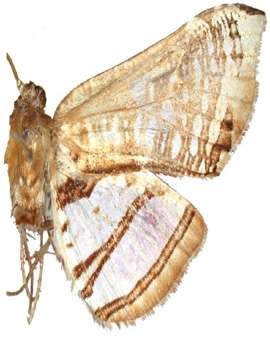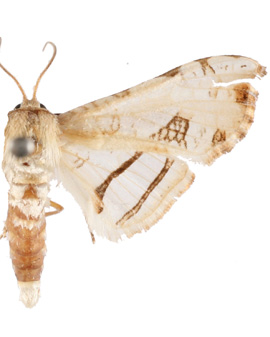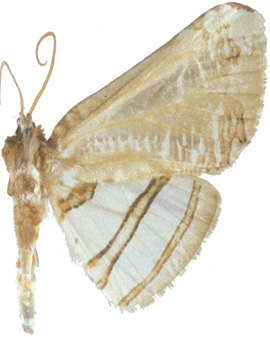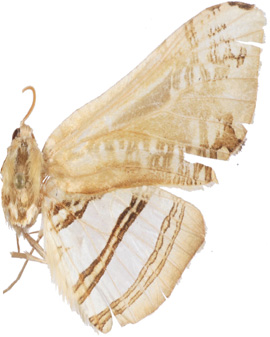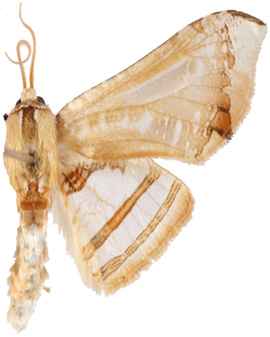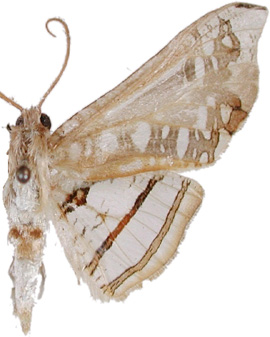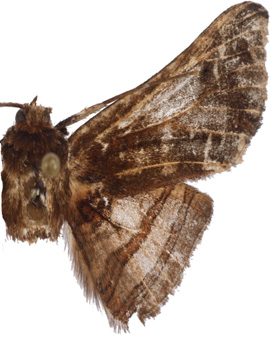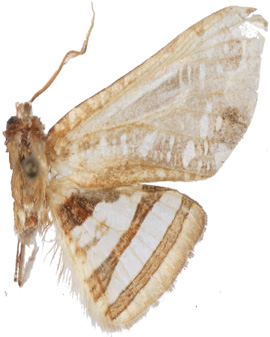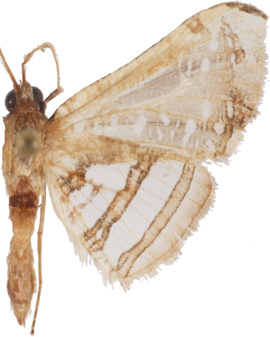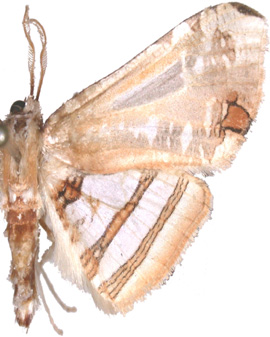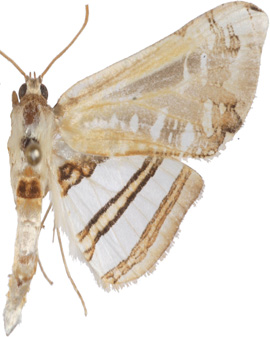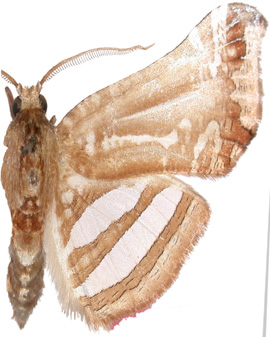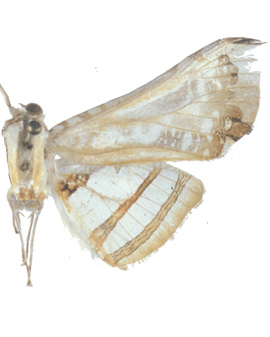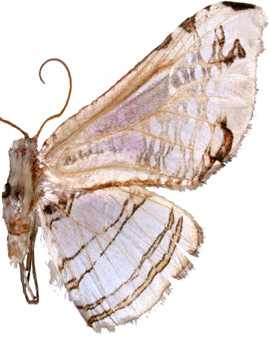Scientific classification
Animalia > Arthropoda > Insecta > Lepidoptera > Ditrysia > Thyridoidea > Thyrididae > Siculodinae > Siculodini > Herdonia
Herdonia Section 1. Male antennae laminate
Herdonia Section 2. Male antennae dentate
Herdonia Section 3. Male antennae unipectinate
Herdonia Section 4; Male antennae unknown.
Genus Herdonia Walker, 1859
Type species: osacesalis Walker (1859c:963) by monotypy, is from Bangladesh (Syllet).
Generic description: Proboscis is unscaled, palpI short and porrect with second joint upturned, and the third naked, not reaching the vertex of the head. Antennae are mostly simple but can be thickened laminate, dentate or unipectinate in males but simple and slender laminate in females. Antennal length is about two thirds of the FW, hind tibiae with two pairs of spurs (a few exceptions). Tarsi without paired spines at the base of each joint, except for several spines at the inner area of the 5th joint. Hind tarsus longer than tibia. FW often falcate. (Hampson [1893] 1892:367; Inoue 1993, 2001).
Herdonia is restricted to the Old World tropics of Indo-china and Malesia and similar morphotypes from the Neotropics should be placed in a different genus. It has over 36 species many of them having been described by the late H. Inoue, only recently. Many of the holotype specimens have been deposited in the NHM. Inoue (1993 & 2001) contains definitive descriptions of most species including illustrations of their genitalia and the male antennae but despite Inoue’s major works some specimens do not readily conform closely with his very specific descriptions. At least 26 medium to large sized species occur in Malesia but only seven of them are from Borneo. A few unnamed species remain. This genus is characterised by a slightly falcate FW with relatively simple streaky patterning in grey, brown and pale yellowish fawn often with translucent areas. The FW may have small areas with black reticulation. The translucent or shining white HW usually has two or three narrow single or double lines parallel to the termen. A very few large species (e.g. H. titan Inoue, 2001) have a much simpler FW patterning with only a few dark lines on a predominantly fawn backgound. Although some species have distinctive fascia or distinctive antennae, in many the patterning is only subtly different and most are best separated by genitalic characteristics.
In this work Herdonia is separated into the three sections set out by Inoue (1993 & 2001) using the characteristics of the male antennae. Where the male antennae are unknown they are grouped separately at the end of the sections.

